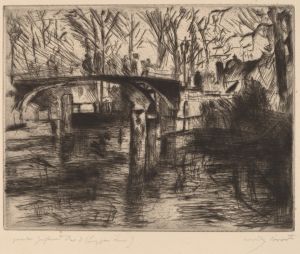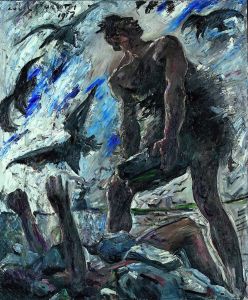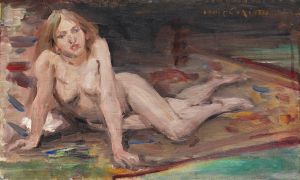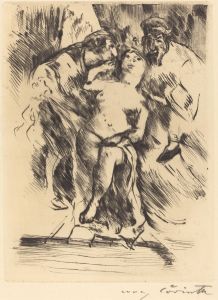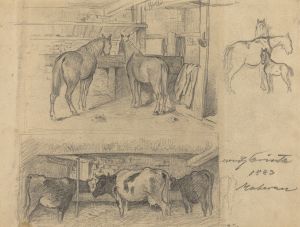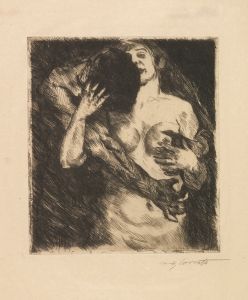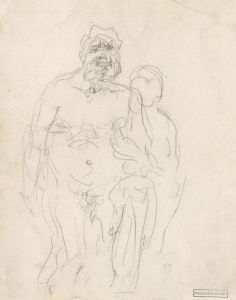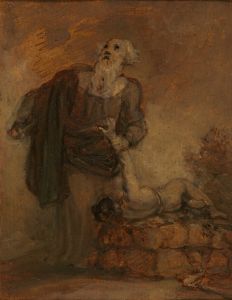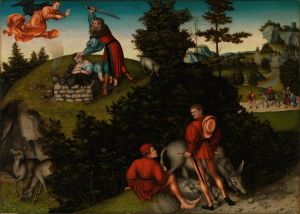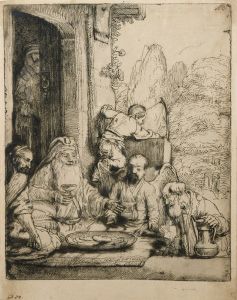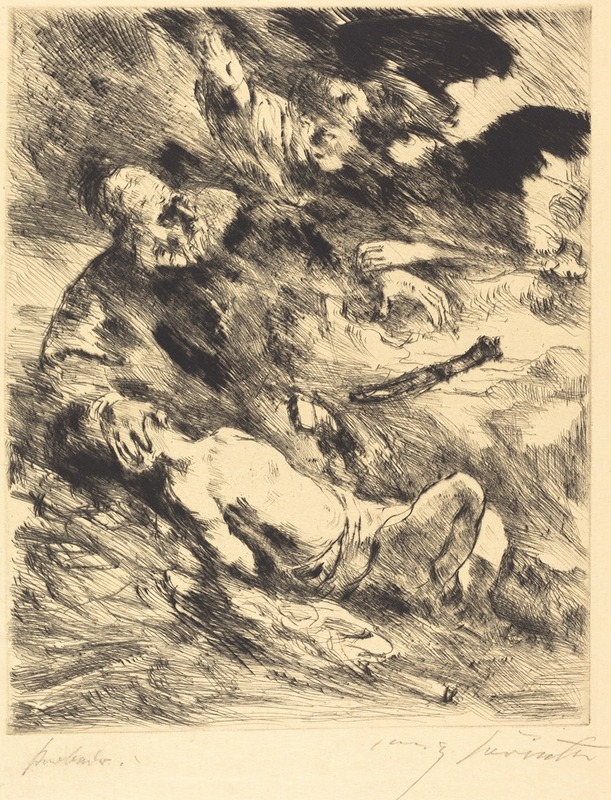
The Sacrifice of Isaac
A hand-painted replica of Lovis Corinth’s masterpiece The Sacrifice of Isaac, meticulously crafted by professional artists to capture the true essence of the original. Each piece is created with museum-quality canvas and rare mineral pigments, carefully painted by experienced artists with delicate brushstrokes and rich, layered colors to perfectly recreate the texture of the original artwork. Unlike machine-printed reproductions, this hand-painted version brings the painting to life, infused with the artist’s emotions and skill in every stroke. Whether for personal collection or home decoration, it instantly elevates the artistic atmosphere of any space.
Lovis Corinth's painting The Sacrifice of Isaac is a work by the German artist, created in 1925. Corinth, a prominent figure in the German Impressionist and Expressionist movements, often explored biblical themes in his later works, reflecting his interest in dramatic and emotional narratives. This painting depicts the well-known story from the Book of Genesis in the Bible, where Abraham is commanded by God to sacrifice his son, Isaac, as a test of faith.
In The Sacrifice of Isaac, Corinth captures the intense emotional and psychological tension of the moment. The composition is dynamic, with Abraham and Isaac as the central figures. Abraham is shown in the act of preparing to sacrifice his son, his expression conveying a mixture of anguish and determination. Isaac, often depicted as a young boy in traditional interpretations of the story, is portrayed with a sense of vulnerability, emphasizing the gravity of the scene. The angel of the Lord, who intervenes to stop the sacrifice, is also present, symbolizing divine mercy and the resolution of the test.
The painting is notable for its expressive brushwork and dramatic use of color, hallmarks of Corinth's mature style. His technique combines elements of Impressionism, with its focus on light and texture, and Expressionism, which emphasizes emotional intensity. The result is a work that is both visually striking and emotionally powerful.
Lovis Corinth created this painting during the later years of his life, a period marked by personal and professional challenges, including a stroke in 1911 that affected his ability to paint. Despite these difficulties, he continued to produce significant works, often drawing on religious and mythological themes. The Sacrifice of Isaac reflects Corinth's deep engagement with questions of faith, morality, and human suffering, themes that resonate throughout his oeuvre.
The painting is housed in the Kunsthalle Bremen, a museum in Bremen, Germany, which holds a notable collection of Corinth's works. It remains an important example of his ability to reinterpret classical themes through a modern lens, blending traditional subject matter with innovative artistic techniques.
This work is a testament to Corinth's enduring legacy as one of Germany's most significant painters of the late 19th and early 20th centuries.






